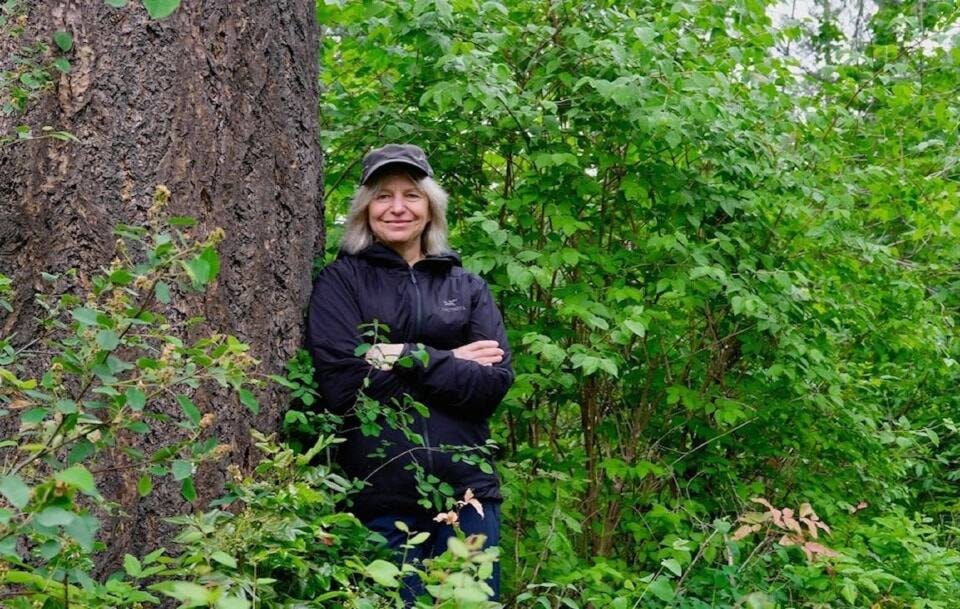A Nelson scientist has been named to Time magazine’s 100 most influential people of 2024.
Suzanne Simard teaches forest ecology at the University of British Columbia and lives in Nelson.
Her shows that underground networks of mycorrhizal fungi help trees share nutrients and pass on information about threats such as disease and drought. The trees in a forest behave as a single organism.
calls this work “revolutionary” and placed her under the Icons section of its list with other Canadians such as Michael J. Fox and Elliot Page.
Finding the Mother Tree, Simard’s 2021 book about her research, has upturned the way we think about forests and has convinced many scientists and their students that conserving existing forests is the most effective way of responding to the climate crisis.
Simard told the Nelson Star that she was “surprised and deeply humbled” to learn that she had made Time’s list. She said it is significant that the list included her as a scientist who works on climate change.
Her research has been replicated elsewhere and her ideas have become mainstream. Her TED talks have been viewed more than 10 million times and she points out that her work has begun to appear in popular culture such as in Richard Powers’ Pulitzer Prize-winning novel The Overstory, in the movie Avatar, and in the TV series Ted Lasso.
“It has become taught in schools that nature is connected, and they use the example of the mycorrhizal connections below ground as a beautiful illustration of that,” she said.
Her discovery that nature operates in complex ways through reciprocal relationships among trees contains lessons for human society, she said.
“We as people are nature too, and when we fully remember that reality and treat forests as our home, then we will be able to solve the problem of climate change because we will go back to our spiritual connection to the forest, treating it with respect and following these examples of reciprocity that we see in nature.”
Simard’s current work is with the Mother Tree Network and the Mother Tree Project, “which are about helping communities, including Indigenous communities, to transition away from the need to take down their forests to tending them and using more careful approaches.”
This will help maintain biodiversity and protect the forest against wildfire, flooding and drought, she said.
“The trees, Simard teaches us, are talking,” writes Time’s Jeffrey Kluger. “It is our job to start listening.”
READ MORE:
•
•



